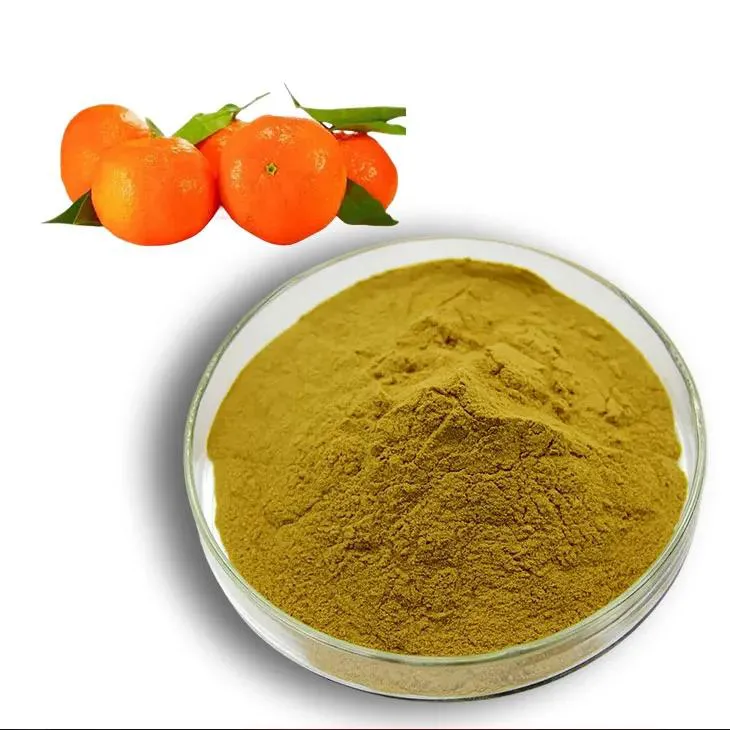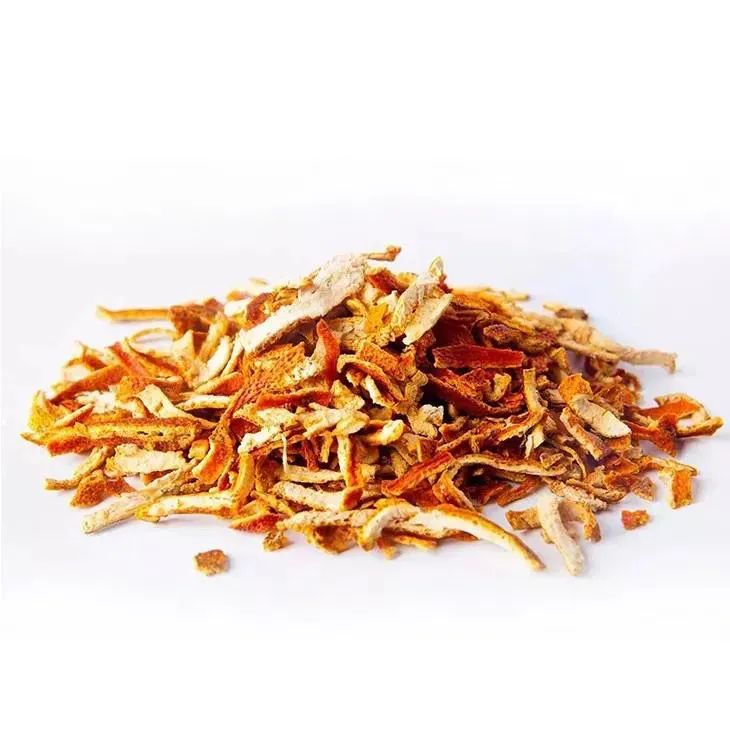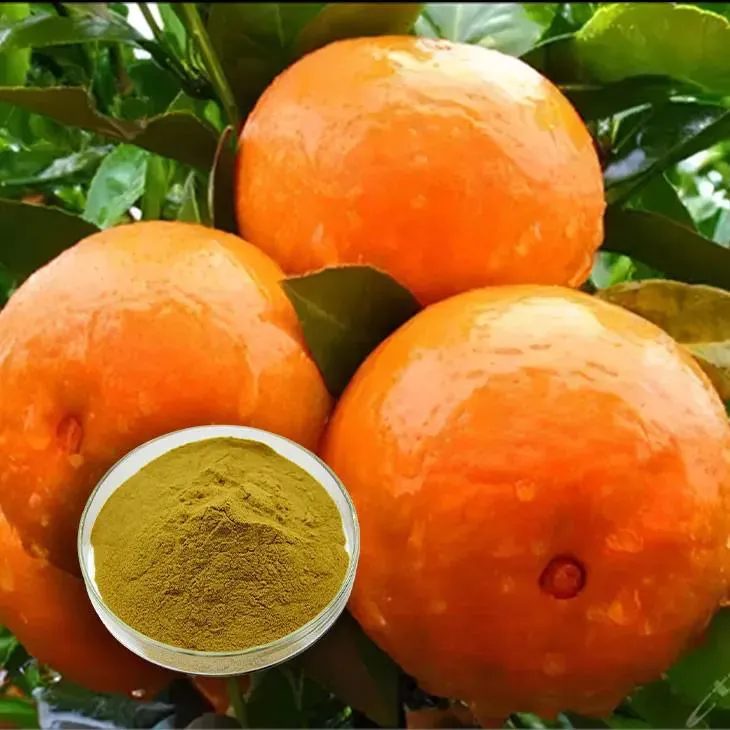- 0086-571-85302990
- sales@greenskybio.com
Citrus bioflavonoids: Uses, Advantages and Manufacturing Processes
2024-11-13

1. Introduction
Citrus fruits are not only delicious but also a rich source of bioactive compounds. Among these, Citrus bioflavonoids have attracted significant attention in recent years. Bioflavonoids are a class of polyphenolic compounds that are widely distributed in the plant kingdom. In citrus fruits, they are present in various forms and concentrations, contributing to the unique properties of these fruits.

2. Uses of Citrus bioflavonoids
2.1. Health - Promoting Effects
Enhancing Immunity: Citrus bioflavonoids play an important role in the immune system. They can stimulate the production of immune cells such as lymphocytes and macrophages. For example, certain bioflavonoids have been shown to enhance the activity of natural killer cells, which are crucial for the body's defense against viruses and cancer cells. This immune - enhancing effect can help the body to better resist infections and diseases.
Protecting Cardiovascular Health: These bioflavonoids are beneficial for the heart and blood vessels. They can help to lower blood pressure by relaxing the smooth muscles in the blood vessel walls. Moreover, they have antioxidant properties that can prevent the oxidation of low - density lipoprotein (LDL) cholesterol. Oxidized LDL cholesterol is a major risk factor for atherosclerosis. By reducing LDL oxidation, citrus bioflavonoids can lower the risk of developing heart disease.
2.2. Cosmetic Applications
Citrus bioflavonoids are also used in the cosmetic industry. They have antioxidant and anti - inflammatory properties that can be beneficial for the skin. For instance, they can protect the skin from damage caused by free radicals, which are generated by environmental factors such as UV radiation and pollution. This can help to reduce the signs of aging, such as wrinkles and fine lines. In addition, their anti - inflammatory properties can soothe irritated skin and reduce redness.

3. Advantages of Citrus Bioflavonoids
3.1. Natural Origin
One of the major advantages of citrus bioflavonoids is their natural origin. They are derived from citrus fruits, which are a common and natural food source. This makes them more acceptable to consumers compared to synthetic compounds. Consumers are increasingly interested in natural products, as they are perceived as being safer and more in line with a healthy lifestyle.
3.2. Safety Profile
Citrus bioflavonoids generally have a good safety profile. Since they are natural components of citrus fruits, they have been consumed by humans for a long time. However, like any other substance, excessive intake may have potential side effects, but at normal dietary levels, they are considered safe.
3.3. Multiple Bioactivities
These bioflavonoids possess multiple bioactivities. In addition to the immune - enhancing and cardiovascular - protecting effects mentioned above, they also have anti - cancer potential. Some studies have suggested that certain citrus bioflavonoids may inhibit the growth and spread of cancer cells. Their antioxidant and anti - inflammatory properties also contribute to their overall health - promoting effects in various body systems.

4. Manufacturing Processes of Citrus Bioflavonoids
4.1. Raw Material Selection
The manufacturing process of citrus bioflavonoids begins with the selection of high - quality raw materials. Citrus fruits such as oranges, lemons, and grapefruits are commonly used. The freshness and variety of the fruits can affect the quality and quantity of bioflavonoids. For example, ripe fruits may contain higher levels of certain bioflavonoids compared to unripe ones.
4.2. Extraction Methods
Solvent Extraction: One of the traditional extraction methods is solvent extraction. Organic solvents such as ethanol or methanol are often used to dissolve the bioflavonoids from the citrus peel or pulp. However, this method has some limitations. For example, the solvent residues may need to be removed completely to ensure the safety of the final product.
Supercritical Fluid Extraction: Supercritical fluid extraction, especially using carbon dioxide as the supercritical fluid, has become an increasingly popular method. This method has several advantages. It can operate at relatively low temperatures, which helps to preserve the bioactivity of the bioflavonoids. Also, it can produce a cleaner extract with fewer impurities compared to solvent extraction.
4.3. Purification and Concentration
After extraction, the obtained extract usually needs to be purified and concentrated. Chromatographic techniques such as high - performance liquid chromatography (HPLC) can be used for purification. This can separate the bioflavonoids from other impurities in the extract. Concentration methods can increase the concentration of bioflavonoids in the final product, making it more suitable for various applications.
4.4. Product Formulation
The final step in the manufacturing process is product formulation. The purified and concentrated bioflavonoid extract can be formulated into different forms such as tablets, capsules, or liquid formulations. Additives may be added to improve the stability, solubility, or taste of the product. For example, in a tablet formulation, binders and fillers may be used to hold the bioflavonoid powder together and give the tablet its shape.
5. Conclusion
Citrus bioflavonoids have a wide range of uses in promoting human health and have applications in the cosmetic industry. Their natural origin, safety profile, and multiple bioactivities are significant advantages. The manufacturing processes of citrus bioflavonoids are constantly evolving to ensure efficient extraction, purification, and production of high - quality products. As research on citrus bioflavonoids continues, it is expected that more applications and benefits will be discovered in the future.
FAQ:
What are the main uses of citrus bioflavonoids?
Citrus bioflavonoids are mainly used in promoting human health. For example, they can enhance immunity, which helps the body to resist various diseases. Also, they play a role in protecting cardiovascular health by reducing the risk factors related to heart diseases, such as regulating blood pressure and cholesterol levels.
Why are citrus bioflavonoids considered to have advantages?
The main advantage of citrus bioflavonoids is their natural origin. Since they are derived from citrus fruits, they are more acceptable to consumers who are increasingly interested in natural products. Compared to synthetic substances, natural bioflavonoids are often perceived as safer and more in line with the concept of a healthy lifestyle.
What is the general manufacturing process of citrus bioflavonoids?
The manufacturing process typically starts from raw citrus materials. Modern techniques are used to extract bioflavonoids efficiently. During the extraction process, great care is taken to maintain the bioactivity of these substances. After extraction, purification and refinement steps are carried out to obtain the final refined products that can be used in various applications such as in the food, pharmaceutical or nutraceutical industries.
Can citrus bioflavonoids be used in the food industry?
Yes, they can be used in the food industry. Due to their natural origin and potential health - promoting properties, citrus bioflavonoids can be added to certain foods as functional ingredients. For example, they may be added to juices, dietary supplements, or even some processed foods to enhance their nutritional value.
Are there any side effects of citrus bioflavonoids?
When consumed in normal amounts as part of a balanced diet, citrus bioflavonoids generally do not have significant side effects. However, in some rare cases, excessive intake may cause mild digestive discomfort such as nausea or diarrhea. But this is not common and usually depends on individual sensitivities.
Related literature
- Citrus Bioflavonoids: Chemistry, Pharmacology, and Therapeutic Potential"
- "Bioflavonoids from Citrus Fruits: Composition, Biological Activities and Health Benefits"
- "The Role of Citrus Bioflavonoids in Cardiovascular Health: A Review"
- ▶ Hesperidin
- ▶ Citrus Bioflavonoids
- ▶ Plant Extract
- ▶ lycopene
- ▶ Diosmin
- ▶ Grape seed extract
- ▶ Sea buckthorn Juice Powder
- ▶ Fruit Juice Powder
- ▶ Hops Extract
- ▶ Artichoke Extract
- ▶ Mushroom extract
- ▶ Astaxanthin
- ▶ Green Tea Extract
- ▶ Curcumin
- ▶ Horse Chestnut Extract
- ▶ Other Product
- ▶ Boswellia Serrata Extract
- ▶ Resveratrol
- ▶ Marigold Extract
- ▶ Grape Leaf Extract
- ▶ New Product
- ▶ Aminolevulinic acid
- ▶ Cranberry Extract
- ▶ Red Yeast Rice
- ▶ Red Wine Extract
-
Golden Seal Extract
2024-11-13
-
Medicinal Marshmallow Extract
2024-11-13
-
Lavender Extract
2024-11-13
-
Peppermint Oil
2024-11-13
-
Ivy Extract
2024-11-13
-
Maca Extract
2024-11-13
-
Black Rice Extract
2024-11-13
-
Hawthorn powder
2024-11-13
-
Beetroot Powder
2024-11-13
-
Jujube Extract
2024-11-13





















